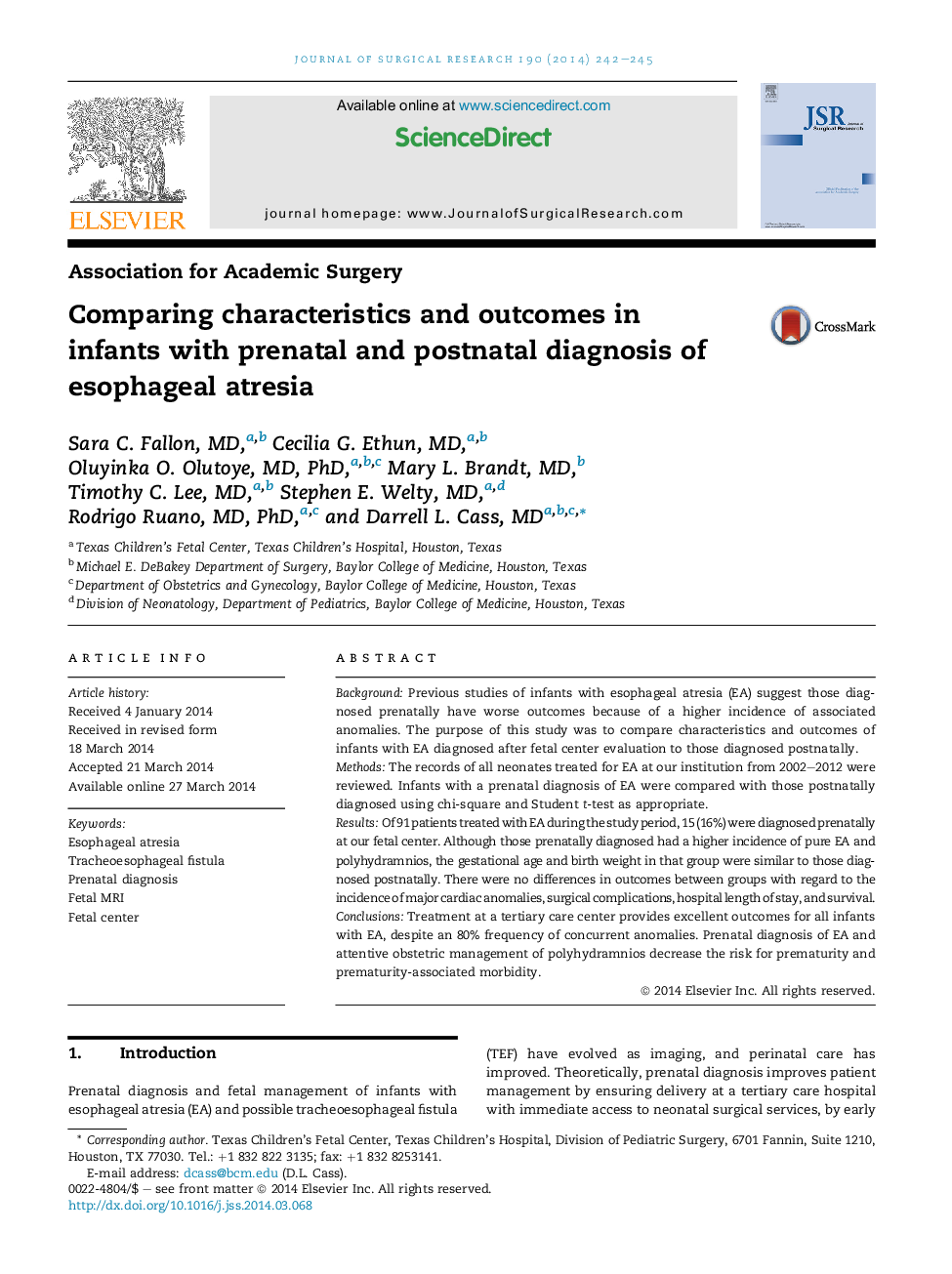| Article ID | Journal | Published Year | Pages | File Type |
|---|---|---|---|---|
| 4300188 | Journal of Surgical Research | 2014 | 4 Pages |
BackgroundPrevious studies of infants with esophageal atresia (EA) suggest those diagnosed prenatally have worse outcomes because of a higher incidence of associated anomalies. The purpose of this study was to compare characteristics and outcomes of infants with EA diagnosed after fetal center evaluation to those diagnosed postnatally.MethodsThe records of all neonates treated for EA at our institution from 2002–2012 were reviewed. Infants with a prenatal diagnosis of EA were compared with those postnatally diagnosed using chi-square and Student t-test as appropriate.ResultsOf 91 patients treated with EA during the study period, 15 (16%) were diagnosed prenatally at our fetal center. Although those prenatally diagnosed had a higher incidence of pure EA and polyhydramnios, the gestational age and birth weight in that group were similar to those diagnosed postnatally. There were no differences in outcomes between groups with regard to the incidence of major cardiac anomalies, surgical complications, hospital length of stay, and survival.ConclusionsTreatment at a tertiary care center provides excellent outcomes for all infants with EA, despite an 80% frequency of concurrent anomalies. Prenatal diagnosis of EA and attentive obstetric management of polyhydramnios decrease the risk for prematurity and prematurity-associated morbidity.
